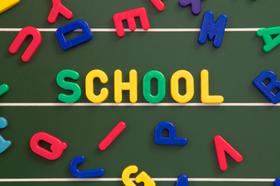Top Rankings
Yazoo Co School District ranks among the top 20% of public school district in Mississippi for:
Category
Attribute
Graduation Rate
Highest graduation rate (Top 5%)
Student Attention
Lowest student:teacher ratio (Top 1%)
For the 2025 school year, there are 3 public elementary schools serving 812 students in Yazoo Co School District. This district's average elementary testing ranking is 3/10, which is in the bottom 50% of public elementary schools in Mississippi.
Public Elementary Schools in Yazoo Co School District have an average math proficiency score of 31% (versus the Mississippi public elementary school average of 51%), and reading proficiency score of 24% (versus the 43% statewide average).
Minority enrollment is 60% of the student body (majority Black), which is more than the Mississippi public elementary school average of 57% (majority Black).
Overview
This School District
This State (MS)
# Schools
4 Schools
696 Schools
# Students
1,229 Students
292,146 Students
# Teachers
110 Teachers
22,730 Teachers
Student : Teacher Ratio
11:1
11:1
Student By Grade
District Rank
Yazoo Co School District, which is ranked within the bottom 50% of all 147 school districts in Mississippi (based off of combined math and reading proficiency testing data) for the 2022-2023 school year.
The school district's graduation rate of 92% has increased from 75-79% over five school years.
Overall District Rank
#119 out of 148 school districts
(Bottom 50%)
(Bottom 50%)
Math Test Scores (% Proficient)
28%
52%
Reading/Language Arts Test Scores (% Proficient)
24%
42%
Science Test Scores (% Proficient)
33%
55%
Graduation Rate
92%
89%
Students by Ethnicity:
Diversity Score
0.56
0.61
% American Indian
n/a
1%
% Asian
1%
1%
% Hispanic
1%
5%
% Black
55%
45%
% White
37%
43%
% Hawaiian
n/a
n/a
% Two or more races
6%
5%
All Ethnic Groups
District Revenue and Spending
The revenue/student of $16,385 is higher than the state median of $12,205. The school district revenue/student has grown by 12% over four school years.
The school district's spending/student of $16,220 is higher than the state median of $12,074. The school district spending/student has grown by 12% over four school years.
Total Revenue
$20 MM
$5,371 MM
Spending
$20 MM
$5,314 MM
Revenue / Student
$16,385
$12,205
Spending / Student
$16,220
$12,074
Best Yazoo Co School District Public Elementary Schools (2025)
School
(Math and Reading Proficiency)
(Math and Reading Proficiency)
Location
Grades
Students
Rank: #11.
Bentonia Gibbs School
(Math: 35-39% | Reading: 25%)
Rank:
Rank:
3/
Bottom 50%10
10340 Hwy 433 West
Bentonia, MS 39040
(662) 755-2270
Bentonia, MS 39040
(662) 755-2270
Grades: PK-5
| 375 students
Rank: #22.
Yazoo County Middle School
(Math: 30% | Reading: 24%)
Rank:
Rank:
2/
Bottom 50%10
116 Panther Drive
Yazoo City, MS 39194
(662) 746-1596
Yazoo City, MS 39194
(662) 746-1596
Grades: 6-8
| 275 students
Rank: #33.
Linwood Elementary School
(Math: 15-19% | Reading: 20-24%)
Rank:
Rank:
1/
Bottom 50%10
3439 Vaughan Road
Vaughan, MS 39179
(662) 673-9191
Vaughan, MS 39179
(662) 673-9191
Grades: PK-5
| 162 students
Recent Articles

The 15 Biggest Failures of the American Public Education System
The world is in a constant state of change and those who fail to adjust fall behind. Unfortunately, the American public education system has not kept up with the times and is currently facing a number of serious problems. Keep reading to learn about the biggest failures affecting the modern U.S. public education system as well as some of the trends that could spark change.

Florida Governor Calls for More Funding for State鈥檚 Public School System
Florida Governor Rick Scott has introduced a state budget for next year that pumps one billion more dollars into the public school system. We鈥檒l look at his reasons for the increase and the responses to the proposal.

Can Your Child鈥檚 School Meet the National Standards?
The article discusses the challenges public schools face in meeting national educational standards. It examines current performance trends, identifies key issues affecting student achievement, and explores potential solutions for improving academic outcomes across U.S. public schools.





